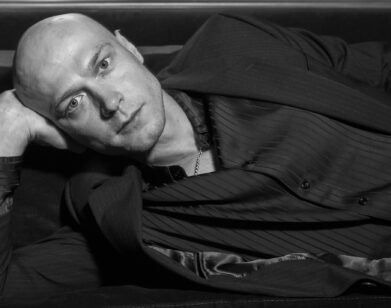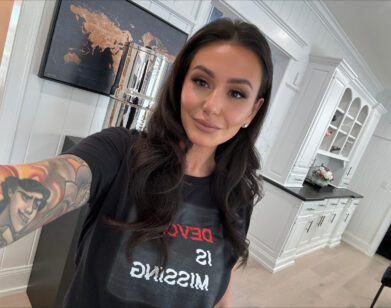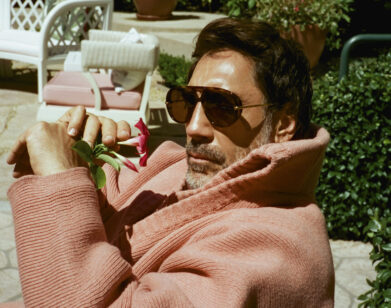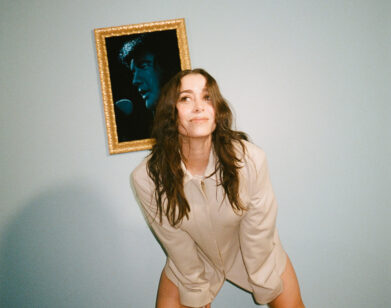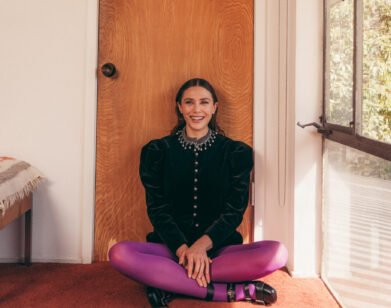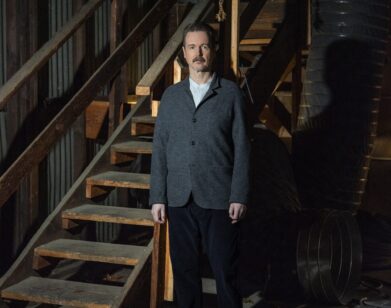Jannicke Systad Jacobsen Mines Teen Angst
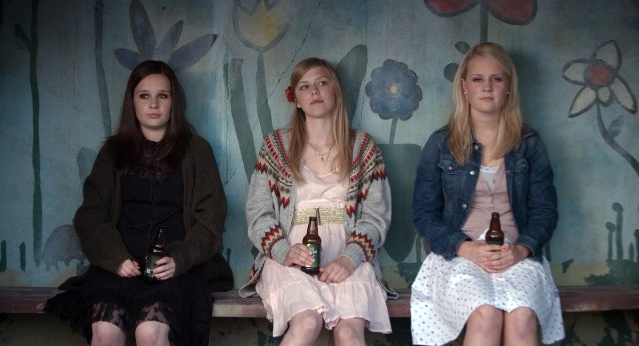
ABOVE: A STILL FROM JANNICKE SYSTAD JACOBSEN’S TURN ME ON, DAMMIT!.
Jannicke Systad Jacobsen’s debut feature, Turn Me On, Dammit!, concerns the sexual urges and subsequent shaming of gawky Alma (Helene Bergsholm), a teenager living with her single mom in a small town. After a crush refuses to admit he flashed her, Alma feels the stinging reality of high-school life as the moment blows up to epidemic proportions. Shunned by her classmates, she escapes into a world of fantasy, hoping to one day leave home for good.
Interview spoke with Jacobsen about moving from documentary to fiction film, working with non-professionals, and why she made a movie about teenagers.
CRAIG HUBERT: You started in documentaries, and this is your first fictional film. Why did you decide to make the jump?
JANNICKE SYSTAD JACOBSEN: When I was in film school, I studied fiction. It’s sort of coincidental that is started making documentaries and I liked it very much. I was making documentaries for many years and getting better at it. I always wanted to do fiction as well, but when you get on one track the ball starts rolling. At one point, when I got this artist work grant in 2006, I thought I should try to do a feature before it’s too late. Not that documentary is a bad place to be stuck in. I just thought it would be a different challenge. The way I made documentaries have been very influenced by my knowledge of fiction—I wrote scripts and planned a lot. You know, when you make a documentary you never have complete control of what you’re doing, so I thought it would be nice to do a feature where I could control things a bit more.
HUBERT: You mentioned you treated your documentaries like fiction films. Was there anything from the documentary work you brought over to this film?
JACOBSEN: I think so. Maybe when you’re used to working with real people, not actors, you have a different sensitivity. Many of the young people in this film are non-actors, so that helped. Also the cinematographer and sound recordist, I worked with previously on documentaries. We know how to work together and share the experience, which is helpful. The fiction world is rougher; the style is more like a military experience as opposed to the softness of making documentaries. A lot of it is the philosophy from making documentaries, how you treat people. With these non-professionals, went to a place similar to the book to cast them—we didn’t cast city kids. They have the experience of growing up in a place like this. They know what it’s like and could easily relate.
HUBERT: The visual style of the film seems very naturalistic at first, but starts to take advantage of the structure of the film, using different techniques as the main character, Alma, veers off into fantasies. How far ahead are you thinking about visual style, or do you let it come organically in the moment?
JACOBSEN: The cinematographer, Marianne Bakke, is previously a still photographer, and I like still photography a lot. We spent a lot of time looking at stills, trying to find the mood and the visual landscape. We looked at both documentary photographers and fashion photography. We worked really meticulously at that. We knew the atmosphere—that was planned. It’s good that it doesn’t look planned. We took advantage of the summer, where we have really long nights—it is light until midnight. We had a really long magic hour and had a lot of great atmosphere with natural lighting.
HUBERT: What was the process of casting the film? Did you look at many kids?
JACOBSEN: It was a challenge. It was logistically quite challenging. This area that we were casting in is very widespread. It’s a few hours between these small towns; it took a lot of time. We had about 450 kids come in for the five parts, which is not a lot, really. I think we’re lucky we found these five roles. We spent a lot of time in the casting giving them different challenges and teaching them to be in the situation and listening to each other. A little acting school, in a way
HUBERT: When you had the cast in the place, did you continue that little acting school?
JACOBSEN: We did some rehearsals. The kids got to know each other through the casting, and then we had a reading with all the other actors. We went through some of the scenes with the professionals. I didn’t give them the script; I didn’t want them to learn their lines. We just used the script for shooting. With Helene [Bergsholm], who plays Alma, there were, obviously, some scenes that had to be talked about and prepared so she would feel safe.
HUBERT: Was their hesitation on her part? Some of the material in the film could be scary, or at least challenging, I imagine, for a young person—especially non-actors.
JACOBSEN: They knew from the start what the story was about. We talked about some of the tricky scenes with the parents, to let them know how it was going to be done and what my intentions were with the film. We helped make it okay for them.
HUBERT: The film was adapted from a book, which I understand is larger than the film.
JACOBSEN: Yeah. The book is four stories about different characters.
HUBERT: Was it difficult to narrow it down, figuring out what was essential for you from the book and what you could leave behind?
JACOBSEN: This is the first screenplay I’ve written for a feature film, so it was a learning process. I think I did it the hard way, but it turned out well in the end. I tried for a very long time to have the stories from the book all together. They’re all one-acts, in a way. But in the end, it was deliberating, in a way, to cut out the two other characters and make the story about Alma bigger, as well as develop some of the other characters and create new ones. Also, when people read the book, people were rooting for Alma, she was the character they were attentive to.
HUBERT: One of the most interesting parts of the film was the character of Sara, who seems to remain in the background but ends up playing a significant role in the film.
JACOBSEN: For me, she is the character I strongly relate to, how I remember myself as a teenager—you want to be brave and save the world, do all these things; it’s a lot tougher than it looks.
HUBERT: Why a film about teenagers?
JACOBSEN: What I liked about the book, in general, is that it’s about everyday people. The storytelling—mixing reality and fantasy—I thought would be interesting for a film. The characters were recognizable and easy to understand, in a way. The story also had a great sense of humor I could relate to. All our lives it’s not somebody who dies—we don’t have these big, dramatic incidents every day—but very small things that mean a lot to us. I thought it was interesting that the story had small incidents that grow out of proportion. That is what life is like.
TURN ME ON, DAMMIT! IS OUT IN LIMITED RELEASE TOMORROW.

